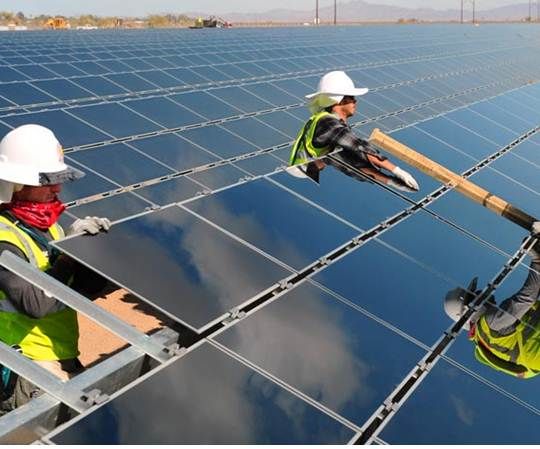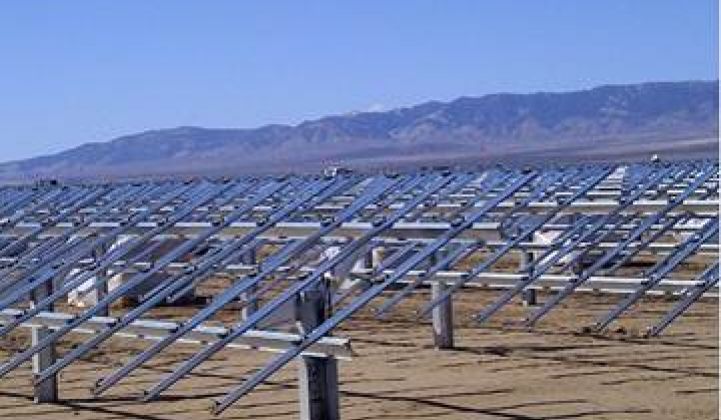Rumors of a verbal dispute involving the Los Angeles County Inspector and First Solar employees at the 230-megawatt Antelope Valley Solar Ranch One (AVSR1) photovoltaic power plant led GTM to the discovery that 3.7 million cadmium telluride thin-film panels that First Solar was preparing to install at the Exelon facility are not Underwriters Laboratory-approved.
If the panels require replacement, the financial consequences for First Solar could be troubling to the company.
Both the County of Los Angeles and First Solar were contacted for this report. Neither offered many details.
The inspector appears to have been doing a routine site visit, in service to the County’s conditional use permit (CUP) for the solar power plant, when he discovered there was no UL approval for the panels’ electrical connections.
State of California building and safety codes require UL approval of electrical connectors. That approval is apparently not required in other states where First Solar has done installations, and it is also a standard to which First Solar has not been held at installations it has done elsewhere in California.
Why the company has been held to this standard at this site at this time is not clear.
This is the most recent in a long series of challenges faced by First Solar at the AVSR1 project.
According to First Solar spokesperson Ted Meyer, “First Solar is in discussions with Los Angeles County Public Works regarding electrical codes and standards interpretations as they relate to utility-scale, solar photovoltaic (PV) installations. We are confident these discussions will result in a satisfactory resolution for both parties, and in the meantime, construction is continuing on the site.”
The fact that construction is continuing at AVSR1 suggests that if, as the statement promises, the issue is satisfactorily resolved, construction could continue on schedule without a disruption that could threaten the jobs of hundreds of locals and hundreds of thousands of dollars in revenue for the local community.
That would explain the County spokesperson Bob Spencer’s characterization of the matter as a “hiccup” not uncommon to any construction project, particularly because the California and LA County codes are more stringent than federal requirements.
“The Los Angeles County Public Works Department,” Spencer added, “is working with First Solar to address its plan check comments relative to the rating of the modules and the applicable electrical safety regulations appropriate for the specific intended use on this project and continues to work to find an equitable solution to the issue.”
A formal announcement earlier this week confirmed that ownership of AVSR1 had formally been transferred to Exelon Corporation (NYSE: EXC) from First Solar (Nasdaq: FSLR) with the finalization of the first advance of a loan guaranteed by the U.S. Department of Energy’s Loan Programs Office.

First Solar continues to be in charge of engineering, procurement and construction (EPC) at the site. It is also in charge of EPC at the NRG Energy Alpine Solar project located a few miles down the road, and is also subject to provisions of an LA County CUP.
The total number of panels that will require some kind of attention or adjustment is well in excess of four million.
Neither the County nor First Solar would comment on whether corrections at other First Solar projects in development or retroactive corrections of panels at other California sites will be necessary.
Also under development with First Solar as panel supplier and in the EPC role and -- therefore potentially affected by this issue -- are the 550-megawatt Topaz Solar Farm in San Luis Obispo County owned by MidAmerican Holdings and the 550-megawatt Desert Center Solar Farm in Riverside County owned by NextEra Energy and GE.
The 21-megawatt Blythe Solar Project in Riverside County owned by NRG Energy may also be affected.
_540_449_80.jpg)



